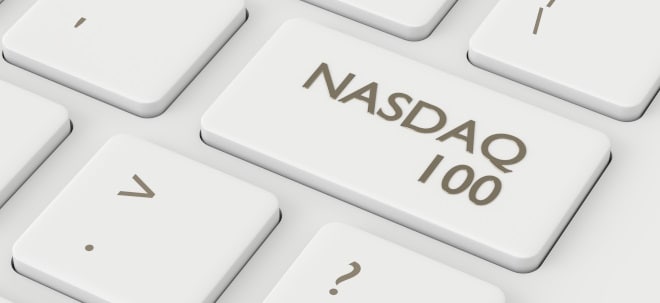January 18, 2007
By Rudi Filapek-Vandyck, Editor of FNArena.com
A Big Year Ahead For Uranium
Rudi Filapek-Vandyck, editor of FNArena.com
http://www.fnarena.com
Amidst the severe turmoil on global commodity markets in the first three weeks of January one commodity has stood out like a solid oak in the middle of a corn field: uranium.
Admittedly, buying and selling on the open spot market has been rather quiet so far this year. But then again, the spot price for U3O8 (uranium oxide) made a few gigantic leaps in the final quarter of calendar 2006 finishing the year at an unexpected US$72/lb - more than double the US$35/lb recorded at the beginning of 2006.
So far, the spot price has not moved from its record high price level in January.
Even more important is that market insights and price forecasts have made a few quantum leaps over the past few weeks as well. It would appear that the wider investment community has finally taken notice of the paradigm shift that has occurred in the uranium market over the past 36 months or so.
The flooding of Cameco\'s Cigar Lake project in particular seems to have convinced a few more experts that uranium is indeed a latecomer in this Super Cycle with producers and explorers bound to enjoy another year of strong spot price momentum at a time when the outlook for most other commodities seems less clear cut, to say the least.
The latest expert to join the queue of former skeptics who turned unquestionably bullish is Deutsche Bank. The broker reported on Tuesday it had significantly increased its price forecasts for the next three years.
Deutsche Bank notes how the price for uranium has not weakened since it took off in 2003. The broker\'s revised price forecasts suggest investors and market enthusiasts should not have to worry anytime soon with the new estimates predicting steadfastly further climbing prices - at least until mid-2009.
Before the flooding of the Cameco mine, uranium was enjoying strong support from increasing global demand and a supply deficit forecast until at least 2009 (although not everyone was convinced about this fact). Post the flooding the sector, and those following it, simply had to come to terms with the fact that circa 10% of projected new supply will not become available anytime soon.
Cameco, the world\'s largest producer of uranium representing circa 21% of global supply, is expected to update the market on its Cigar Lake project on February 6 and 7. No doubt, this will be the most anticipated event within the sector for a long time.
Deutsche Bank analysts believe the flooding of the Canadian mine has altered the industry for many years to come. "Like other commodities which have witnessed phenomenal price increases, the uranium market will eventually restrain itself as exploration and production increases and newer forms of supply are introduced to the market. Nevertheless, until this situation unfolds, we expect continued strength and greater increases in the spot price", the report states.
So far Cameco management has only conceded that the flooding at Cigar Lake might delay production by circa twelve months. Deutsche Bank believes the market has priced in a delay by two years.
Regardless of whether this is true or false, the broker believes it will take years to bring supply and demand in balance - even when scenarios such as the potential release of secondary material by either Russia or the US government are taken into account.
An ongoing tight uranium market is projected to catapult the U3O8 spot price to above US$100/lb by the third quarter of calendar 2007. As Deutsche Bank has put an average spot price of US$100/lb for the whole year in its projections, a logical conclusion is that the price will spike much higher than the magical US$100/lb in the second half of this year.
The average price forecast for calendar 2008 now stands at US$105/lb, while 2009 should see a gradual retreat as the year unfolds leading to a projected average price of US$90/lb.
How much value should we adhere to these projections?
Our colleagues at Stockinterview.com amassed a few more price revisions by some experts in the market. At Merrill Lynch analysts Vicky Binns and Daniel Hynes have penciled in average prices of US$75/lb for this year and US$80/lb for 2008. Adam Schatzker at RBC Capital, however, agrees with Deutsche Bank and predicts a US$100/lb spot price average for calendar 2007.
Patricia Mohr, Vice President of Economics at Scotiabank, sees uranium averaging US$80 throughout the current calendar year, but reaching US$90/lb in the final quarter. Bart Jaworski at Raymond James has put the 2007 price average at US$90, while forecasting US$100/lb for both 2008 and 2009.
When US based analysts at JP Morgan caught up with the new reality in November last year they did what Deutsche Bank (and most experts) has refused to do so far: they raised their long term price estimate to US$70/lb.
JP Morgan forecasts a 2007 price average of US$90/lb, with estimates for the subsequent three years set at US$80/lb.
In Australia, politics will play a major role throughout the year. In April the Labor party\'s national meeting is on the agenda. FNArena has received confirmation from inside the party that the new leaders expect the party to abandon its stringent no-extra uranium mining policy.
In December analysts at ABN Amro stated they believed a change in policy would lead to a re-rating of the Australian uranium explorers and potentially trigger further consolidation in the sector. It seems but logical that investors will treat an official change in view by Australia\'s leading opposition party -and current ruler in every state of the Federation- as a first step towards a more uranium mining friendly environment in Australia.
Later in the year the Federal government will announce new elections.
- Rudi Filapek-Vandyck |


 Thread abonnieren
Thread abonnieren


